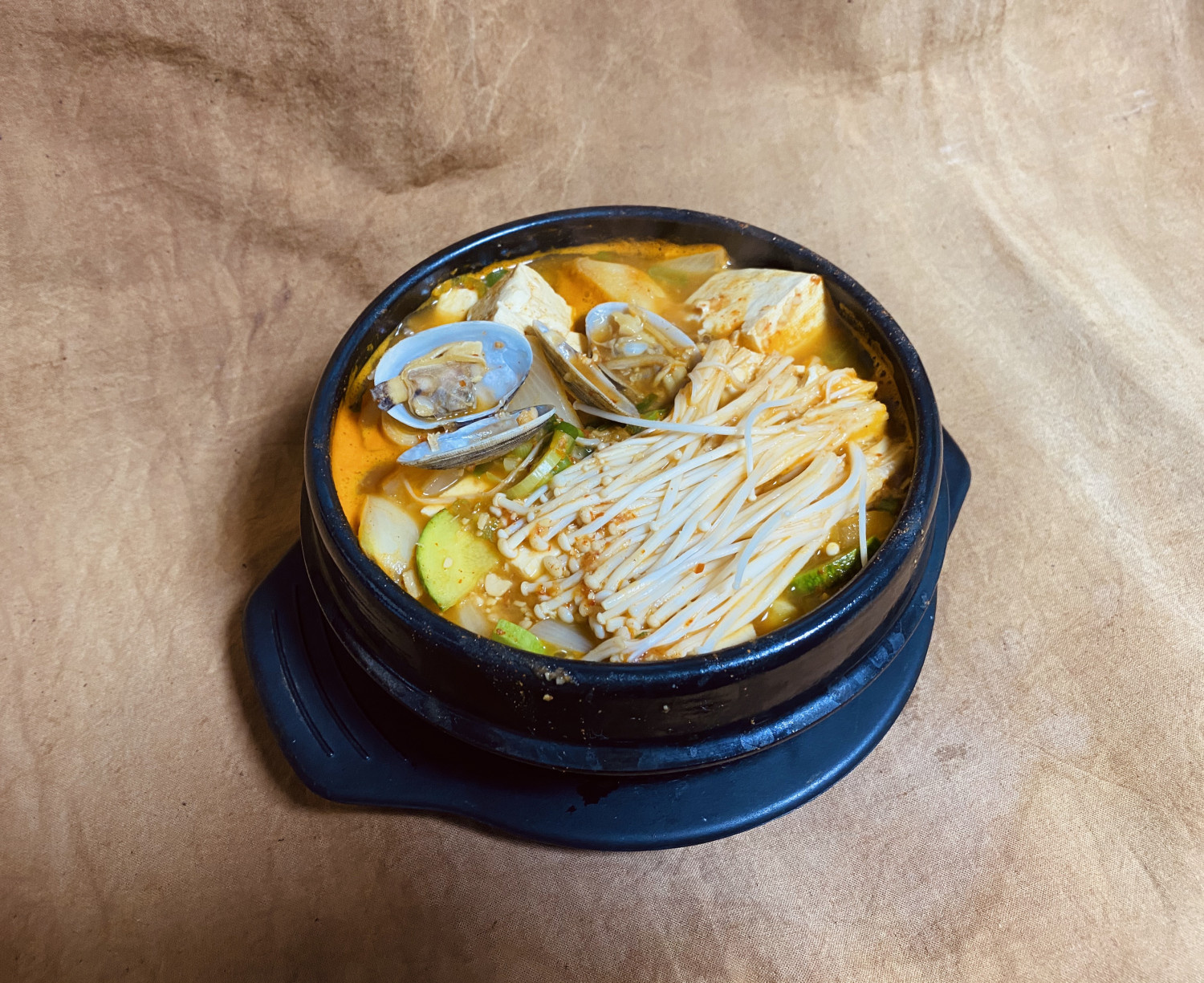Hearty and Refreshing Clam Doenjang Jjigae Recipe
How to Make Delicious Clam Doenjang Jjigae Using Fresh Clams from the Mart

Today, I was pondering what to cook while browsing at the nearest mart. I spotted fresh clams and thought, ‘Why not make a hearty clam doenjang jjigae?’ So, here I am, about to prepare a delightful clam doenjang jjigae! While beef doenjang jjigae is known for its savory and comforting taste, clam doenjang jjigae offers a distinct refreshing flavor that’s equally delicious. It’s a perfect dish to enjoy with a bowl of rice! Let’s get started!
Jjigae Ingredients- 1 bunch Enoki mushrooms (approx. 50g)
- 1 stalk Green onion
- 1/4 Korean zucchini
- 1/3 Onion
- 15-20 Clams
Seasoning Paste- 1 Tbsp Gochujang (Korean chili paste)
- 2 Tbsp Doenjang (Korean soybean paste)
- 3 cloves Garlic, minced (approx. 1 Tbsp)
- 1/2 Tbsp Gochugaru (Korean chili flakes)
- 1 Tbsp Gochujang (Korean chili paste)
- 2 Tbsp Doenjang (Korean soybean paste)
- 3 cloves Garlic, minced (approx. 1 Tbsp)
- 1/2 Tbsp Gochugaru (Korean chili flakes)
Cooking Instructions
Step 1
First, in a ttukbaegi (earthenware pot) or regular pot, combine the doenjang, gochujang, minced garlic, and gochugaru to create the seasoning paste. Add the thoroughly washed clams to the paste and mix them well. Marinating the clams beforehand will deepen the broth’s flavor and enhance its savory notes.

Step 2
Prepare the potatoes to add a comforting texture and depth to the jjigae. Cut the potatoes into bite-sized pieces. (Tip: Soaking the cut potatoes in water for about 10 minutes can help remove excess starch. Removing starch results in a clearer broth and helps the potatoes maintain their shape without breaking apart. You can skip this step if preferred.)

Step 3
Now, pour water into the ttukbaegi. Add just enough water to cover the ingredients comfortably. Be mindful not to add too much water, as it can make the broth too diluted.

Step 4
Place the ttukbaegi on the stove over medium heat. Gently stir with a spoon to dissolve the seasoning paste and prevent clumping. (Important: If the paste clumps and boils, the doenjang and gochujang can stick to the bottom of the pot and burn. Make sure to dissolve it thoroughly before it boils!)

Step 5
Once the jjigae starts to boil, carefully skim off any foam or impurities that rise to the surface. Removing these impurities will result in a cleaner and more refined broth taste.

Step 6
After skimming off impurities, add the sliced Korean zucchini and onion. Give it a gentle stir to ensure the ingredients are well distributed.

Step 7
When the zucchini and onion become slightly translucent and the jjigae returns to a rolling boil, taste the broth. If it needs more saltiness, add a tiny pinch of salt. If you feel the soybean flavor isn’t strong enough, you can dissolve a little more doenjang to adjust the seasoning.

Step 8
Now, add the tofu, cut according to your preference. You can cut the tofu into larger chunks or smaller pieces. I personally enjoy the texture of larger tofu pieces, so I cut them accordingly. (Tip: In smaller pots like a ttukbaegi, thinly sliced, wide pieces of tofu can easily break apart during cooking. For larger pieces, or if you prefer thin, wide slices, consider using a wider pot.)

Step 9
Finally, add the diagonally sliced green onion and arrange the enoki mushrooms, torn into bite-sized pieces, on top. If you enjoy a spicy kick, adding 1-2 finely chopped Cheongyang peppers at this stage will add a delightful heat.

Step 10
Continue to simmer the jjigae for about one more minute after adding the enoki mushrooms. Overcooking the mushrooms will make them mushy and diminish their pleasant texture. Enjoy your delicious and refreshing clam doenjang jjigae with a warm bowl of rice!




